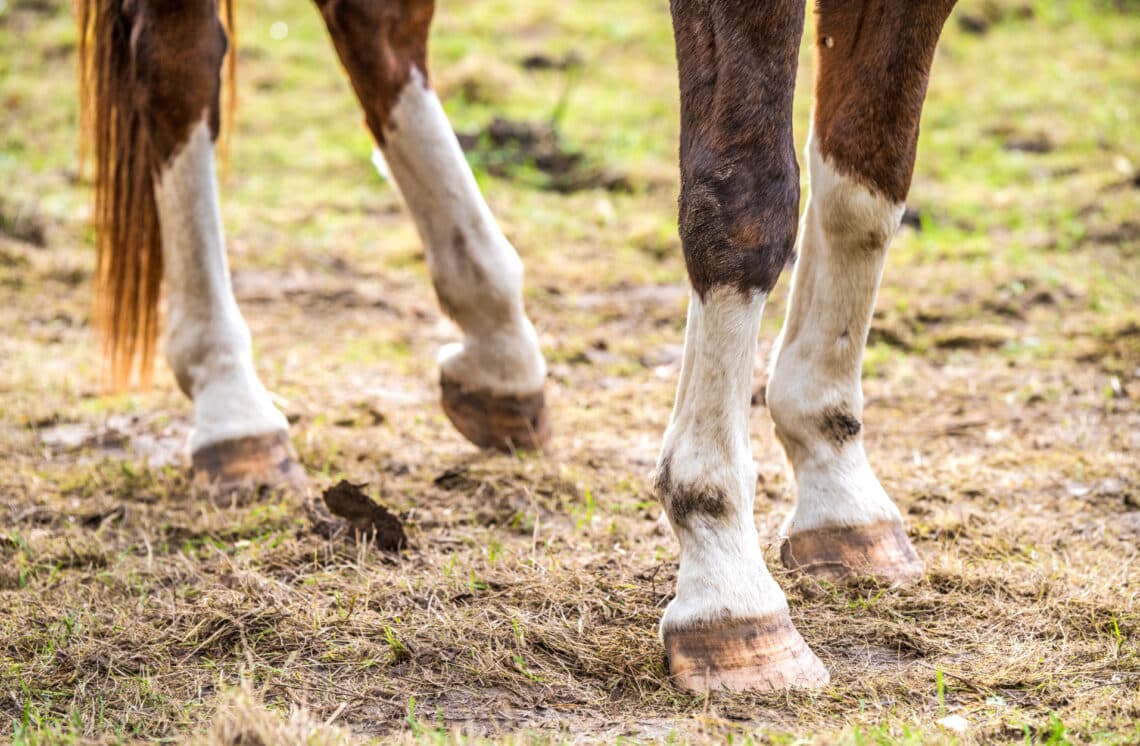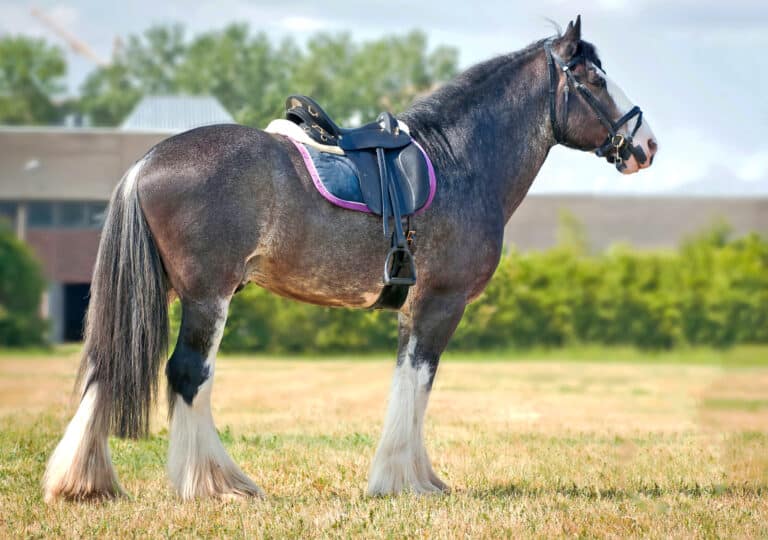
Shivers: what you need to know
Have you heard of shivers but been unsure as to exactly what it is and how bad its effects are? DR ELIZABETH BARTER has some answers.
A diagnosis of shivers is not something any horse owner want to hear. While its symptoms have been documented for hundreds of years, there is still much yet to be discovered about the condition and it’s causes, and research is ongoing.
What is Shivers?
Shivers is a neuromuscular disease in which horses exhibit tremors or shivers of the tail and thigh muscles, have difficulty holding up the hind limbs, and display an unusual gait when asked to move backwards. Unfortunately, half of the horses diagnosed with shivers slowly progress in their symptoms over time.
For hundreds of years there have been descriptions of horses suffering from the symptoms of shivers, but until recently the cause of the disease has remained a mystery. And there is still no specific test or treatment for shivers, with a diagnosis arrived at based on clinical signs which can be intermittent or variable early in the disease process.

What are the signs?
Horses with advanced cases of shivers have a characteristic gait abnormality when backing of holding their leg to the side and elevating their tail (see classification system at the end of this article). The clinical signs appear to be involuntary, without the horse knowing, and may extend to shivering or tremoring of the thigh muscles.
Some horses progress to an inability to lift their hind leg for their hooves to be cleaned, or to be shod by the farrier. Whilst the hind legs are more typically affected, front leg and face abnormalities have been reported. Signs in forelimbs include the limb being held outward with the muscles above the elbow shaking, whilst facial signs can include rapid blinking, quivering of the ears, and twitching of the lips. However, the horse’s gait is normal when moving forward at the trot and canter.
Symptoms
Symptoms can occur at any age and affect any breed of horse although experts suspect that genetics might be involved. Typically, clinical signs are observed before horses are four years of age. Fifty percent of horses progress with their symptoms and by the time they are seven years old, they are unable to walk backwards.
A higher proportion of tall geldings are reported with Shires, Clydesdales and Warmbloods 16.2hh and taller over-represented. However, shivers has also been observed in mares, Quarter Horses, and Thoroughbreds. Signs of the disorder may become worse after confinement, stress, excitement, or illness, with episodes of leg twitching observed while at rest and when eating or drinking with the head down.

Cause
Horses have two main ‘chains’ of muscles (the flexors and the extensors) that are involved in propulsion. The flexors, run at the back of leg and flex the stifle and hock bringing the leg up. The extensors are involved in straightening the leg.
In normal horses, when the flexor muscles are activated the extensors are relaxed. However, horses with shivers have a miscommunication that causes both flexors and extensors to be activated at once, resulting in spasms and abnormal coordination. Recent studies have shown the miscommunication to be due to degeneration of the Purkinje cells axons (the long slender nerve fibres involved with voluntary motor control) as they enter the cerebellum, the back of the brain responsible for normal motor movements. Clinical signs are seen when fine motor control is required such as when the horse is backed up.
Studies have shown subclinical evidence of disrupted muscle control when horses are walking forward, but these are often not able to be seen with the naked eye. As the disease progresses muscle wastage of the thighs can occur, and horses may become reluctant to lie down.
Diagnosis
There is no specific test or genetic markers for shivers. Some horses present with classical clinical signs – trembling in the hindlimbs, difficulty backing and picking up hind feet – making a diagnosis straightforward.
Milder cases however, have intermittent and variable signs and numerous tests and lameness examinations may be required to rule out other conditions. Horses may additionally suffer from combined diseases such as shivers and polysaccharide storage myopathy (PSSM), which is also prevalent in the same breeds of horses listed above.
Treatment and prognosis
There are no current treatments for shivers and the condition is progressive in 50 percent of horses. Due to the potential genetic link, it is not recommended to breed affected horses. Keeping horses in work, supported with massage, body work and acupuncture, may aid in maintaining muscle mass and competition fitness.
The degree to which the horse’s performance is impacted depends on the discipline the horse is involved in. Dressage requires fine motor control and backing at advanced levels, so the effects of shivers are likely to hinder competition. Similarly, horses involved with driving may be impacted due to an inability to back into the hitch.
There are no tests to predict which horses will continue to deteriorate and which horses will maintain their current performance level. Warm climates and maintaining low stress environments have previously been advocated to reduce signs although study results are variable.
Diets high in fat, and low in carbohydrate have also been thought to limit spasm episodes early in the disease. However, such diets may be treating a combination of PSSM conditions as well as shivers and their effectiveness is hard to determine. Vitamin E supplementation has also been advised, but like all other treatments, the results are poorly documented.
If you think your horse may have shivers, contact your equine veterinarian to rule out other possibilities, and to advise on appropriate management.
Shivers classification system
Shivers Hyperflexion (HF)
Most common form affecting one or both limbs. Walk and trot are normal with hyperflexion noted when backing. During backing one hindlimb is raised up and held away from the body and the limb shakes (shivers) with the tail head raised. The hoof is then brought rapidly to the ground when the spasm resolves.
Shivers – Forward hyperflexion (FHF)
More severe form with signs when the horse is initially walked forward. The tail head is elevated, and the limb held to the outside. Signs normally improved after a few walk strides or when the horse is trotted but may be exacerbated with a change in surface, speed or direction. Often it is not possible to lift either hind limb manually.
Shivers – Hyperextension (HE)
Most severe form commonly affecting both hind limbs. Horses are reluctant to back. Hind feet are placed further back than normal when moving backwards, locking the stifle and hocks and leading to a sawhorse stance. The tail may be raised, and muscle tremors can be seen in the back legs. The heels may be raised off the ground and the horse might fall if it cannot regain control. Horses still appear normal at trot.
Dr Elizabeth Barter is a senior veterinarian at Apiam Hunter Equine Centre in Scone NSW.



